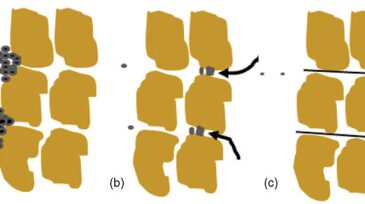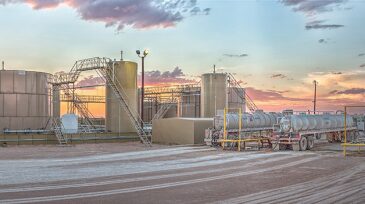Water management
This paper describes a decision-support system that integrates field data, system specifications, and simulation tools to quantify system performance, forecast operational challenges, and evaluate the effect of system modifications in water management.
This paper demonstrates that high-purity salts of calcium, magnesium, strontium, sodium, and lithium can be recovered from produced-water brine using a chemical-reaction pathway followed by vacuum-driven crystallization and a lithium-extraction process.
The authors of this paper aim to design, optimize, and evaluate a scalable and energy-efficient plasma-driven advanced-oxidative-process system for produced-water remediation, emphasizing regulatory compliance for safe discharge or reuse.
-
With the huge amount of water injection in the industry, the need is paramount for a more scientific approach to materials selection for tubing, especially CRAs. Software-based predictors similar to those developed for CO2 corrosion would improve the economical choice of CRAs.
-
As producers and third-party vendors navigate the logistical challenges of water management, the push toward greater reuse of produced water has gained steam. How close is the industry to 100% reuse?
-
The US Environmental Protection Agency recently requested public comments on whether pollutant discharges that reach "waters of the United States" are subject to regulation under the Clean Water Act and require National Pollutant Discharge Elimination System permits.
-
Recycling produced water may not be the soundest economic decision for operators of hydraulic fracturing projects. A water logistics expert examines the design considerations companies must account for with full-cycle water management systems.
-
The rising oil production and produced water volumes in the Permian are expanding the scope and scale of recycling. Apache is aiming to have 50% of its hydraulic fracturing water made from recycled produced water this year.
-
The University of Texas of the Permian Basin hosted its first annual Permian Basin Water in Energy Conference on Wednesday at the Horseshoe Pavilion and presented a forum to discuss the myriad issues surrounding water use.
-
The rising oil production and produced water volumes in the Permian are expanding the scope and scale of recycling. Apache is targeting 50% of its frac water to be made up from recycled produced water this year.
-
An extensive laboratory study was carried out with two objectives: to evaluate the effect of water quality on injectivity of disposal wells with reservoir core plugs and to restore injectivity of damaged wells.
-
A professor, whom the EPA charged with reviewing its 2016 study on hydraulic fracturing’s possible effects on drinking water, shared her observations on the process that led to the agency’s final conclusion.
-
Rising oil production in the Permian Basin has created an opportunity for midstream companies to acquire and expand pipeline infrastructure to handle a predicted spike in produced water.











